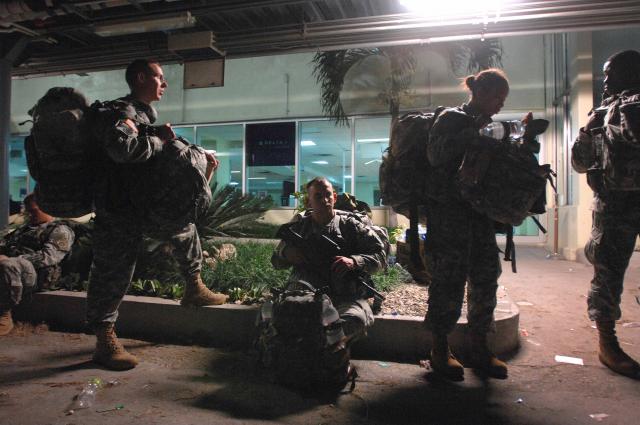President Barack Obama signed a bill into law yesterday to streamline airport screening procedures for service members and their families traveling on official orders.
The Risk-based Security Screening for Members of the Armed Forces Act gives the Transportation Security Administration six months to develop and implement a plan to expedite screening services for service members on orders and in uniform and, “to the extent possible, any accompanying family member.”
The act, in part, calls for the agency to establish standard guidelines for the screening of military uniform items, such as combat boots.
In a statement released today, agency officials said they’re in the process of reviewing options for these new procedures in consultation with the Defense Department.
Even before this law, the agency had several measures in place to aid troops through the screening process. For example, troops in uniform with a military identification card aren’t required to remove their boots or shoes unless they set off an alarm, according to the agency’s website.
The agency also seeks to accommodate family members. Families who would like to accompany a deploying service member to the boarding gate or greet them upon their return may receive passes to enter the secure area of the airport, the site said. Family members, agency officials advise, should contact their air carrier representative at the airport for local procedures.
The agency also expedites the screening process for Honor Flight veterans, and partners with the Defense Department to expedite screening for wounded warriors and their families. The Honor Flight Network organization transports veterans to Washington, D.C., to visit their war memorials.
Also aimed at expediting screening procedures, the agency is testing a new program at the airport in Monterey, Calif. In mid-November, troops traveling out of Monterey Peninsula Airport began presenting their DOD identification to a document checker for card-reader scanning.
The pilot program is designed to test the technology to verify service members’ status. If successful, it could pave the way for service members to be included in the agency’s expedited screening program, agency officials said, enabling them to use special lanes at participating airports to pass more quickly through airport security. These expedited procedures could involve not having to remove their shoes, belt and jackets or their laptops from bags.
Programs such as this one strengthen security, officials said, explaining that separating out low-risk people, such as members of the armed forces, allows the agency to focus its resources on travelers who present a higher risk.
(Tonya Townsell of the Presidio of Monterey public affairs office contributed to this article.)










